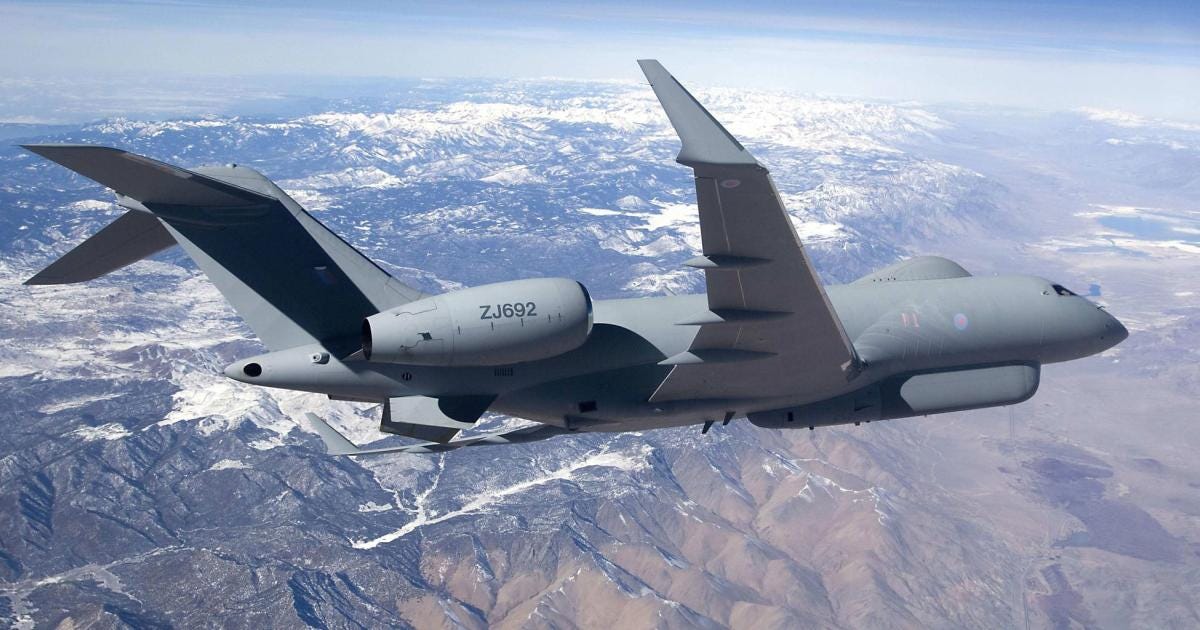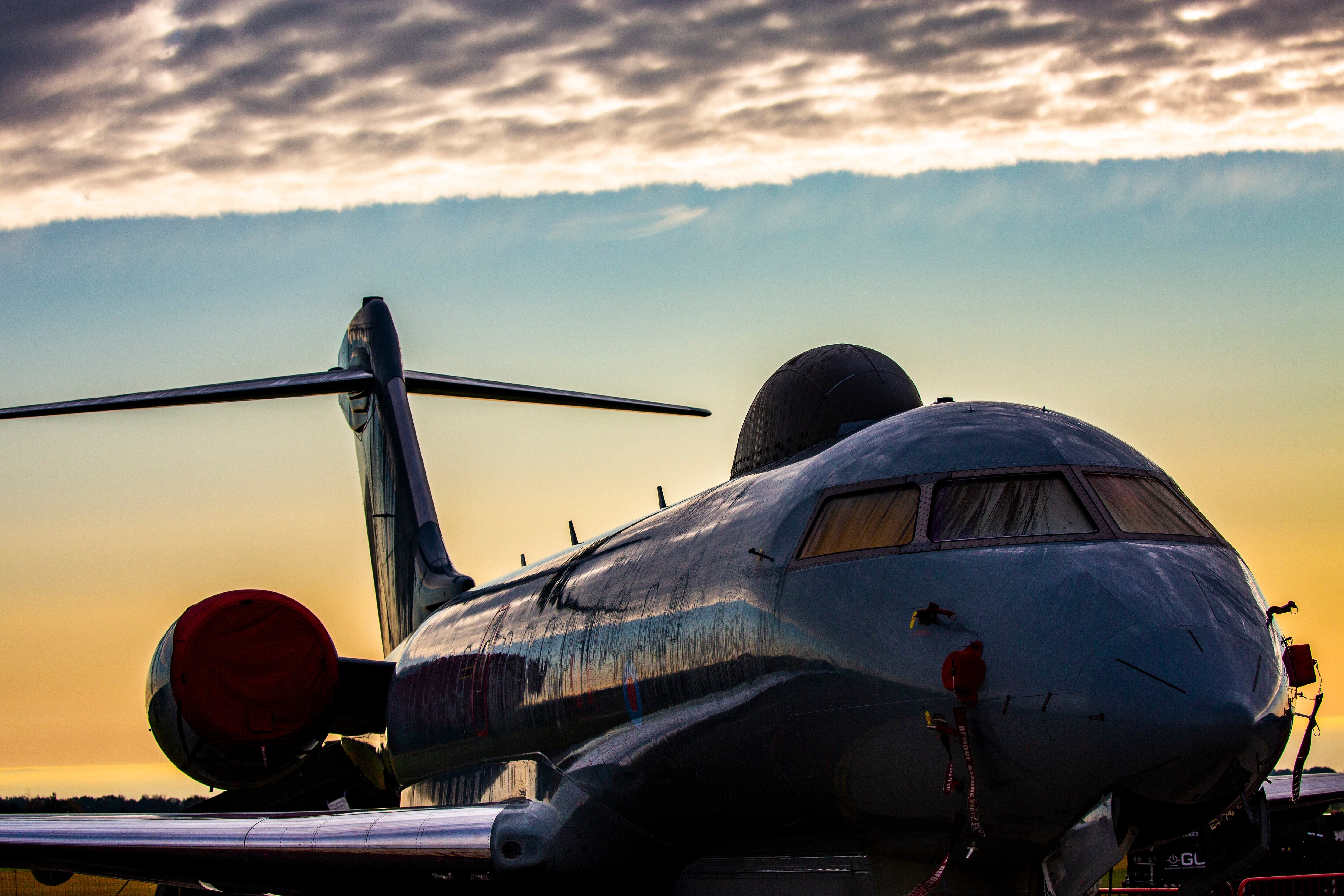I was the test pilot for the Sentinel battlefield snooper
Interview with Test Pilot Colin Rae on testing the sadly missed battlefield spyplane
During the research for the last article, I became somewhat obsessed with the story of the Sentinel. Thanks to Matt Doncaster, I tracked down the Sentinel’s test pilot Colin Rae to find out more.
“Handling-wise I didn’t find it to be quite as pleasant as it looked. I found it relatively heavy in pitch, and it required large elevator inputs to counteract trim changes with airspeed, which was exacerbated by accelerating so quickly. One of those aircraft that hinted at you after 10 minutes to just do what it was designed to do and engage the autopilot.”
First impressions: I completed my Type Rating for the Global Express at CAE in Montreal, where the training was heavily focused on operating the aircraft via the FMS. Coming from the Nimrod, the obvious main difference was around the avionics - it was very much an A to B aircraft, designed to fly IFR into busy civilian airports as quickly and efficiently as possible. Therefore, a significant portion of the syllabus focused on learning to operate the aircraft through the FMS, which was novel to me at the time and presented a steep learning curve. Aircraft handling was still important but attracted much less attention in terms of training time. Fortunately, my instructor was also an ex-military test pilot, so I benefited from some empathy! The frustrating thing was that you got on top of that but then returned to the UK where little of what you’d learned was useful for operating out of military airfields. Situational awareness (of the environment rather than the aircraft and its systems) was poor. This was before the tactical display was fitted, with no moving map or EFB. That might sound odd for such a modern aircraft at the time, capable of worldwide travel, but it was and still is a common issue for civilian aircraft modified for a military role. The civilian role didn’t warrant it, and retrofit is always challenging as a result.
Handling-wise I didn’t find it to be quite as pleasant as it looked. I found it relatively heavy in pitch, and it required large elevator inputs to counter trim change with airspeed, exacerbated by accelerating so quickly. One of those aircraft that hinted at you after 10 minutes to just do what it was designed to do and engage the autopilot. Crosswind landing could be really tricky (a well-known issue). In addition to the lively response of the wing in gusts, a boot-full of rudder would point the nose nicely, all would seem well, then you would get a sudden and significant roll just when you thought you’d nailed it. If you weren’t very quick (or even leading with opposite aileron), you could easily scrape a wing. You also needed to be careful in the climb with the autopilot engaged; I flew with the early software where the aircraft would tend to get below 0.8M around the mid-point of the climb and then continue to decelerate, requiring you to level off or even descend to get the speed back. Not great for an aircraft that was designed to climb to 40k ft plus on every flight.
I really liked the cockpit environment (have to mention the seats though, continuously having to deflate the lumbar support to prevent backache). The noise levels and cabin altitude, combined with a decent headset, made a significant difference in reducing fatigue. I found flights of several hours to be much less tiring than shorter flights on the Nimrod. Being able to fly so high was a real positive aspect, ideal for the intended role. I remember flying for hours across the USA for a trial well above everyone else; even in the States it felt as if we had the airspace all to ourselves. Unfortunately, I was pilot monitoring on the way out and ATC misunderstood my accent on first contact. Instead of callsign ‘Sentinel 1’ we flew the whole trip referred to as ‘Sentimental 1’...
Programme
I don’t think anyone would disagree that the project was difficult, with significant technical issues in the early days. The Global Express was a finely-tuned aircraft designed for a narrow role. It had the height and reach that a sensor platform of this type needed, but it wasn’t as straightforward to put lumps and bumps on it, nor to integrate newly designed sensors and systems, as it had been on the more ruggedly designed aircraft that came before. That said, given the usual outstanding efforts of the front-line operators and MoD / contractor teams responsible for getting the capability into service, it seemed to come good and is probably an asset that’s being sorely missed right now!



Flew with Colin on CXX - great guy.